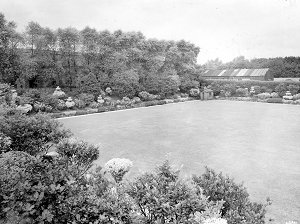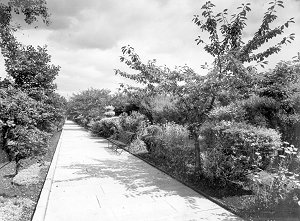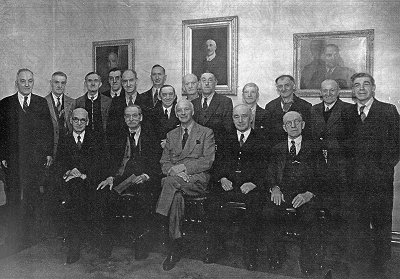4. Up to World War 1 Walter Bradley's older son was born in 1885 and was christened Cuthbert Hermon Bradley, but was always known as Hermon. He joined the company in 1903. His younger son, Hector Claude, born in 1885, joined the company sometime after that. At the outbreak of World War 1 Hermon did not join the forces but stayed at Albion Works to continue running the factory. Hector joined the forces and did not return to the factory until the end of the war. Mary Southall's history of the company says that Walter S. Bradley died in 1918, whereat Hermon Bradley became the Chairman. We have no record of what Bradley's did during the First World War but it is likely that a firm with their production skills and facilities would have been subject to government direction and they were probably engaged in making ammunition or other military equipment. Mary Southall merely observes "part of the factory was turned over to munitions". One effect of the War on the company is a somewhat unexpected one. Mary Southall (in her typescript history of the company) tells the story:
"Mr. Walter Smith Bradley, and his two sons Hector and Hermon answered this call by creating gardens, with tennis courts, (both hard and grass) and of course the bowling green which not only gave the employees a great deal of pleasure and relaxation but between the wars became very well known. In addition a pleasant canteen was built, and a social club room too."
At this period many companies, mainly family companies, were providing sports and social facilities and, in the inter-war period and in the later 40s and 50s, for many people their place of work was also their social centre; and the local sports scene was often dominated by works teams. There are further references to the social life of Bradley's later in this story. The bowling green certainly seems to have been an exceptional piece of landscaping work - and it re-appears later on in a story of the Beldray Ghost. The bowling green and tennis courts were built to the south of the original Albion Works so it must be that by this time Bradley's had acquired what had been the site of the Myatt Pottery works. The history of that company is almost entirely unknown but it now seems likely that they stopped production before or sometime during WW1, thus enabling Bradley's to expand. Mary Southall also records that after the War "in some parts of the factory gas lighting was still used and also material was brought in from suppliers by horse and cart". The photo below (kindly provided by Jaap Arriens), whilst taken long after this period, does show, in one way or another, the leading characters mentioned up to now.
The people in the photo were identified by Mary Southall as follows:
The occasion on which this photo was taken is not known; there may be some connection with long service. The date must be 1947 or after as George Freeman did not become the Works Manager until 1947. |
|||||||





